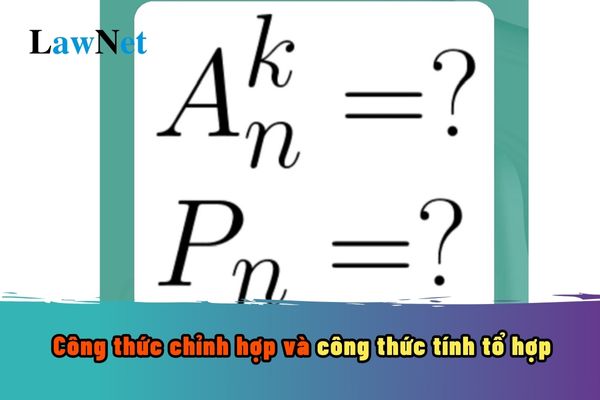What are the partial permutation and combination formulas in Vietnam? What is the grade at which the Mathematics curriculum includes partial permutation and combination formulas?
What are the partial permutation and combination formulas in Vietnam?
10th-grade students can explore the partial permutation and combination formulas below:
|
Partial permutation and combination formulas
|
*Note: The information about partial permutation and combination formulas is for reference only./.

What are the partial permutation and combination formulas in Vietnam? In Vietnam, what is the grade at which the Mathematics curriculum includes partial permutation and combination formulas? (Image from the Internet)
In Vietnam, what is the grade at which the Mathematics curriculum includes partial permutation and combination formulas?
According to Section 5 of the Appendix of the General Education Program for Mathematics issued with Circular 32/2018/TT-BGDDT, the requirements for 10th-grade Mathematics are as follows:
* Combinatorial Algebra
- Counting rules (addition rule, multiplication rule, permutation, partial permutation, and combination) and their practical applications:
Required learning outcomes:
- Apply the addition and multiplication rules in some simple situations (e.g., counting the number of possibilities of heads/tails when flipping a number of coins,...).
- Use the tree diagram in simple counting problems in Mathematics, in other subjects as well as in practice (e.g., counting the number of zygotes formed in Biology, or counting the number of matches in a sports tournament,...).
- Calculate permutation, partial permutation, and combination.
- Calculate permutation, partial permutation, and combination using a calculator.
Thus, according to the regulations, the 10th-grade Mathematics curriculum includes partial permutation and combination formulas.
What are the general objectives of the formation and development of mathematical capability when studying 10th-grade Mathematics in Vietnam?
According to Section 3 of the General Education Program for Mathematics issued with Circular 32/2018/TT-BGDDT, the general objectives for studying 10th-grade Mathematics are as follows:
- The Mathematics curriculum helps students achieve the following primary goals:
+ Form and develop mathematical capabilities including the following core components: mathematical thinking and reasoning capability; mathematical modeling capability; mathematical problem-solving capability; mathematical communication capability; and capability to use tools, and learning mediums in mathematics.
+ Contribute to forming and developing students' key qualities and general capabilities in levels appropriate to each subject, and grade as stipulated in the overall program.
+ Have basic and essential common mathematical knowledge and skills; develop the ability to solve problems with integrated and interdisciplinary aspects between Mathematics and other subjects such as Physics, Chemistry, Biology, Geography, Informatics, Technology, History, Arts,...; provide opportunities for students to experience and apply mathematics in practice.
+ Have a relatively comprehensive understanding of the usefulness of mathematics for each related profession to provide a basis for career orientation, as well as possess the minimum capacity to self-explore issues related to mathematics throughout life.
Therefore, the general objectives of the formation and development of mathematical capability when studying 10th-grade Mathematics in Vietnam are:
[1] Mathematical thinking and reasoning capability;
[2] Mathematical modeling capability;
[3] Mathematical problem-solving capability;
[4] Mathematical communication capability;
[5] Capability to use tools, and learning mediums in mathematics.

